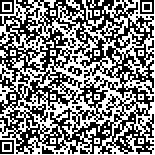附件
|
| 引用本文: | 谷先坤,刘燕山,唐晟凯,李大命,张彤晴,曾庆飞,毛志刚,陈辉辉,谷孝鸿.网围拆除后东太湖鱼类功能群时空变化及影响因子.湖泊科学,2022,34(2):569-581. DOI:10.18307/2022.0217 |
| Gu Xiankun,Liu Yanshan,Tang Shengkai,Li Daming,Zhang Tongqing,Zeng Qingfei,Mao Zhigang,Chen Huihui,Gu Xiaohong.Spatio-temporal variation with influencing factors for fish functional groups in East Lake Taihu after the net removal. J. Lake Sci.2022,34(2):569-581. DOI:10.18307/2022.0217 |
|
| |
|
|
| 本文已被:浏览 4359次 下载 3572次 |

码上扫一扫! |
|
|
| 网围拆除后东太湖鱼类功能群时空变化及影响因子 |
|
谷先坤1,2, 刘燕山1,2, 唐晟凯1,2, 李大命1,2, 张彤晴1,2, 曾庆飞3, 毛志刚3, 陈辉辉3, 谷孝鸿3
|
|
1.江苏省淡水水产研究所, 南京 210017;2.江苏省内陆水域渔业资源重点实验室, 南京 210017;3.中国科学院南京地理与湖泊研究所, 南京 210008
|
|
| 摘要: |
| 通过2019年4、7、10月对网围拆除后东太湖原网围养殖区和非养殖区鱼类资源的调查监测,构建“营养-运动”复合功能群,分析探讨鱼类功能群的时空分布特征及其与环境因子的关系.结果表明:网围拆除后东太湖鱼类群落监测到39种,鲤科鱼类占比66.67%,与太湖相当(66%).采集到的鱼类可构建为4个营养功能群和5个运动功能群,共计11个复合功能群,其中“杂食性-纺锤体型且运动能力强”功能群占比最大,比例为41.34%;其次为“初级肉食性-纺锤体型且运动能力强”、“植食性-纺锤体型且运动能力强”、“次级肉食性-纺锤体型且运动能力强”功能群,占比分别为28.70%、13.46%、13.40%,其他功能群占比较少.在季节变化上,4—10月,原网围养殖区一直以“杂食-强纺锤”鱼类功能群为主,非养殖区则是从“杂食性-纺锤体型且运动能力强”+“植食性-纺锤体型且运动能力强”功能群为主向“初级肉食性-纺锤体型且运动能力强”功能群为主演变;空间分布上原网围养殖区杂食性、次级肉食性、植食性鱼类功能群密度大于非养殖区,初级肉食性功能群密度小于非养殖区.环境因子中氨氮是影响原网围区鱼类功能群结构分布的显著影响因子,且与所有鱼类功能群分布呈负相关.pH、总磷、总氮、溶解氧等也是影响鱼类功能群分布的主要环境因子,但其影响并未达到显著水平.鱼类功能群分析表明网围拆除对东太湖鱼类群落恢复及生态系统修复具有积极作用,但仍需对网围拆除后鱼类群落及自然环境的演变规律进一步探讨和分析. |
| 关键词: 功能群 鱼类群落 时空分布 影响因子 东太湖 网围拆除 |
| DOI:10.18307/2022.0217 |
| 分类号: |
| 基金项目:江苏省省级单位农业项目(2020-SJ-016-2)、国家重点研发计划项目(2020YFD0900305)、江苏省太湖水环境综合治理科研课题项目(TH2018303)和江苏省自主科研项目(BM2018027-SZL201905)联合资助. |
|
| Spatio-temporal variation with influencing factors for fish functional groups in East Lake Taihu after the net removal |
|
Gu Xiankun1,2, Liu Yanshan1,2, Tang Shengkai1,2, Li Daming1,2, Zhang Tongqing1,2, Zeng Qingfei3, Mao Zhigang3, Chen Huihui3, Gu Xiaohong3
|
|
1.Freshwater Fisheries Research Institute of Jiangsu Province, Nanjing 210017, P. R. China;2.Key Laboratory of Fisheries Resources in Inland Water of Jiangsu Province, Nanjing 210017, P. R. China;3.Nanjing Institute of Georgraphy and Limonology, Chinese Academy of Sciences, Nanjing 210008, P. R. China
|
| Abstract: |
| Based on the investigation and monitoring of fish resources in the original net enclosure (ONE) and no net enclosure (NNE) areas of East Lake Taihu after the removal of net enclosure (RNE) in April, July and October 2019, the "trophic-locomotion" combined functional group was constructed, and their spatio-temporal distribution characteristics and their relationship with environmental factors were analyzed. The results showed that 39 species of fish were detected in East Lake Taihu after the RNE, and the proportion of Cyprinidae fish was 66.67%, which was similar to that in Lake Taihu (66%). The collected fish could be divided into 4 trophic and 5 locomotion groups, with a total of 11 combined groups, among which the group "omnivorous, spindle body type with the strong locomotor ability" accounted for the largest proportion (41.34%). The followed functional groups were "primary carnivorous-spindle body type and strong locomotor ability", "plant carnivorous-spindle body type and strong locomotor ability", "secondary carnivorous-spindle body type and strong locomotor ability", accounting for 28.70%, 13.46% and 13.40%, respectively. In terms of seasonal change, the "omnivorous, spindle body type with strong locomotor ability" group was dominant in the ONE, while in the NNE, the dominant functional group evolved from "omnivorous-spindle body type with strong locomotor ability" + "herbivores-spindle body type with the strong athletic ability" to "primary carnivorous-spindle body type with the strong locomotor ability". Spatially, the density of omnivorous, secondary carnivorous and herbivorous fish in the ONE was higher than that in the NNE, while the functional group density of primary carnivorous fish was lower than that in the NNE. Among the environmental factors, ammonia nitrogen was the significant factor affecting the distribution of functional groups of fish in the ONE and was negatively correlated with the distribution of all functional groups. pH, total phosphorus, total nitrogen and dissolved oxygen were also the main environmental factors, but not significantly affecting the distribution of fish functional groups. The RNE has a positive effect on the restoration of the fish community and ecosystem remediation in East Lake Taihu. However, the evolution of the fish community and the natural environment after the RNE still needs to be further assessed. |
| Key words: Functional groups fish community spatio-temporal distribution influencing factors removal of the net enclosure East Lake Taihu |
|
|
|
|